Athugaðu, að þetta er eins og hálfs árs gömul grein, þekkingin flýgur áfram.
Athuga að það geta verið margir aðrir með svipað, ég þurfti að leita þó nokkuð til að finna þetta.
Takið að ykkur að leita að lausnum.
Munum að Nikola Tesla leitaði að vissum lausnum og kom með Niagara virkjunina, rafalana, spennana, háspennu línurnar, og flutti orkuna til borgarana.
Stór hluti af því sem hann bauð upp á, er falið enn þann dag í dag.
Við getum haldið á lofti góðum lausnum fyrir fólkið.
Það er fullt af greinum, sem leita að vandræðum, og greinum til að afvegleiða.
Aðrir gætu verið komnir mun lengra, og að þeim þarf að leita.
Leita að greinum sem leita lausna.
Vísindamaðurinn sagði, leitið og þér munuð finna. Punktur.
Neðst í greininni stendur, að þetta gæti verið komið fyrir alla á næstu 5 árum, aðrir gætu verið komnir lengra segi ég,
“This study represents real progress in regenerative medicine and opens the door to new treatment options for people with age-related macular degeneration. We hope this will lead to an affordable ‘off-the-shelf’ therapy that could be made available to NHS patients within the next five years.”
000
Stem Cell Patch Restores Vision in Patients with Age-Related Macular Degeneration
Þessi slóð hér er frá bing.com hitt er frá mail.
Stem cell-derived retinal pigmented epithelial cells. Cell borders are green and nuclei are red. (Photo Credit: Dennis Clegg, UCSB Center for Stem Cell Biology and Engineering)
Two UK patients suffering from vision loss caused by age-related macular degeneration (AMD) have regained their sight thanks to a stem cell-based retinal patch developed by researchers from UC Santa Barbara (UCSB). The preliminary results of this promising Phase 1 clinical study were published yesterday in the journal Nature Biotechnology.
AMD is one of the leading causes of blindness and affects over six million people around the world. The disease causes the blurring or complete loss of central vision because of damage to an area of the retina called the macula. There are different stages (early, intermediate, late) and forms of AMD (wet and dry). The most common form is dry AMD which occurs in 90% of patients and is characterized by a slow progression of the disease.
Patching Up Vision Loss
In the current study, UCSB researchers engineered a retinal patch from human embryonic stem cells. These stem cells were matured into a layer of cells at the back of the eye, called the retinal pigment epithelium (RPE), that are damaged in AMD patients. The RPE layer was placed on a synthetic patch that is implanted under the patient’s retina to replace the damaged cells and hopefully improve the patient’s vision.
The stem cell-based eyepatches are being implanted in patients with severe vision loss caused by the wet form of AMD in a Phase 1 clinical trial at the Moorfields Eye Hospital NHS Foundation Trust in London, England. The trial was initiated by the London Project to Cure Blindness, which was born from a collaboration between UCSB Professor Peter Coffey and Moorsfields retinal surgeon Lyndon da Cruz. Coffey is a CIRM grantee and credited a CIRM Research Leadership award as one of the grants that supported this current study.
The trial treated a total of 10 patients with the engineered patches and reported 12-month data for two of these patients (a woman in her 60s and a man in his 80s) in the Nature Biotech study. All patients were given local immunosuppression to prevent the rejection of the implanted retinal patches. The study reported “three serious adverse events” that required patients to be readmitted to the hospital, but all were successfully treated. 12-months after treatment, the two patients experienced a significant improvement in their vision and went from not being able to read at all to reading 60-80 words per minute using normal reading glasses.
Successfully Restoring Sight
Douglas Waters, the male patient reported on, was diagnosed with wet AMD in July 2015 and received the treatment in his right eye a few months later. He spoke about the remarkable improvement in his vision following the trial in a news release:
“In the months before the operation my sight was really poor, and I couldn’t see anything out of my right eye. I was struggling to see things clearly, even when up-close. After the surgery my eyesight improved to the point where I can now read the newspaper and help my wife out with the gardening. It’s brilliant what the team have done, and I feel so lucky to have been given my sight back.”
This treatment is “the first description of a complete engineered tissue that has been successfully used in this way.” It’s exciting not only that both patients had a dramatic improvement in their vision, but also that the engineered patches were successful at treating an advanced stage of AMD.
The team will continue to monitor the patients in this trial for the next five years to make sure that the treatment is safe and doesn’t cause tumors or other adverse effects. Peter Coffey highlighted the significance of this study and what it means for patients suffering from AMD in a UCSB news release:
Peter Coffey
“This study represents real progress in regenerative medicine and opens the door to new treatment options for people with age-related macular degeneration. We hope this will lead to an affordable ‘off-the-shelf’ therapy that could be made available to NHS patients within the next five years.”
000
Egilsstaðir, 07.11.2019 Jónas Gunnlaug


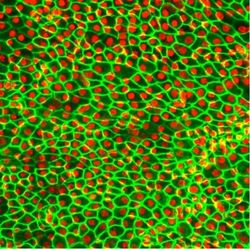
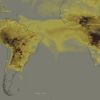
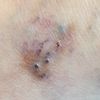
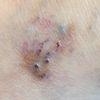
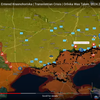

Bæta við athugasemd [Innskráning]
Ekki er lengur hægt að skrifa athugasemdir við færsluna, þar sem tímamörk á athugasemdir eru liðin.